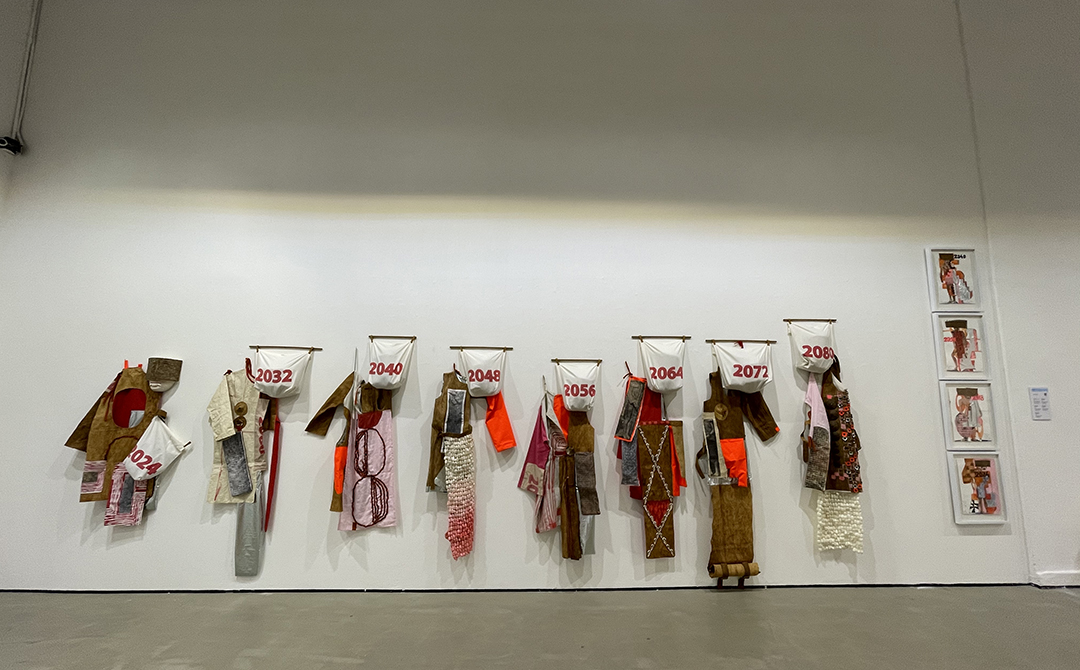Born in the Netherlands, Mella Jaarsma left the country in 1984 after completing her visual art studies at the Minerva Academy in Groningen. She furthered her studies at the Art Institute of Jakarta (IKJ) and the Indonesian Institute of the Arts (ISI) in Yogyakarta, where she has resided and worked ever since. In 1988, Mella co-founded Cemeti Art House, now known as the Cemeti Institute for Art and Society, alongside Nindityo Adipurnomo. It remains an important platform for young artists and art workers in the country and the region to this day.
Mella's works have been exhibited in art events in Indonesia and many corners of the world, including Singapore, Malaysia, Japan, Taiwan, Australia, Russia and Brazil. Several of her pieces have been integrated into the permanent collections of prestigious institutions such as the National Gallery of Indonesia, Queensland Art Gallery, National Gallery of Australia, National Gallery Singapore, and Singapore Art Museum, amongst others.
Recently, Mella, represented by Indonesia’s ROH Gallery, took part in S.E.A. Focus, Singapore, a highlight event of Singapore Art Week held from 20 to 28 January 2024. As usual, she presented a head-turning and intriguing work in the form of a complex costume installation using various materials. Her work series, titled “Because Things Will Change,” featured four framed paintings and eight clothed figures, each carrying a mask in a bag with the respective year number written on them – they are eight years apart from each other, drawing inspiration from the Javanese calendar system, ‘Windu’.
Subsequent to the above-mentioned event, Indonesia Design had the opportunity to have a chat with her. The following are excerpts of the interview.
iD: What triggered you to create ‘Because Things Will Change’?
MJ: In recent years, I have undertaken various projects exploring the perception of measurement – how we assess and assign value to the world around us and the agreements formed by different communities. Residing in Indonesia for four decades had allowed me to witness numerous changes. The current era of a consumptive and commercialized society necessitates contemplating the future and the subsequent generations that will inherit this planet. This installation is crafted with the intent of raising awareness about the time that lies ahead. Rather than presenting a moralistic commentary solely focused on ecological issues, I aim to prompt the audience to independently reflect on what awaits us.
iD: Presumably you use the Javanese calendar system or Windu in this artwork because you have been living in Java for so long. But is there another reason?
MJ: I am drawn to the exploration of systems that were once prevalent but are now in decline or have completely vanished. These systems are intricately connected to natural cycles and agricultural practices, and I find it fascinating that they sustained specific communities for centuries. Studying these historical systems provides me with valuable insights into various facets of life.
I once joined an exhibition in the Keraton in Jogja, celebrating when this current Sultan was one Windu on the throne.
iD: The masks in the bags are only allowed to be open in the year stated in the bags. Does that mean you have a prediction how things will change in those years? Can you share a glimpse of your predictions with us?
MJ: I just predict that things which are common now in our life - which we take for granted now – will be more complex for the coming generations. For example, the choice of having a child, what to eat, where to live. I interviewed my 26-year-old daughter, she said: When I think about the future it is 25 years ahead. The technology will be further developed, but it is scary. Technology should be there to create an easier life, but life has to stay human. I am afraid that this will disappear and we will lose human interactions and contact with humans. We will become cleverer, but have to deal with larger problems.
My contemplation extends beyond personal concerns like timing of my own demise or my whereabouts. I also ponder the fate of my work in the future.
Will it be buried beneath volcano rubble, submerged in a flood, or consumed by the flames of war? Alternatively, will people still be able to encounter and connect with this work, appreciating the intricate masks despite the passage of time?
iD: What are the materials used for the clothes in ‘Because Things Will Change’? And why did you choose to use such materials?
MJ: I have intentionally selected a diverse range of materials for my work, ranging from handwoven cotton and barkcloth to synthetic textiles, shells, coconut shells, and cocoons. The deliberate choice to incorporate both natural and synthetic materials adds layers of meaning to my art. Each material also possesses a distinct lifespan, with some dissolving under specific conditions. For instance, wooden masks may be susceptible to termite damage, while barkcloth might disintegrate when exposed to water, creating a dynamic and evolving aspect to the artwork.
iD: As an artist who has been active for decades, how do you see the development of Indonesian arts amongst the art scene in South East Asia or even the world?
MJ: There are artists and artists communities in Indonesia with the unique ability to articulate local issues in a manner that resonates with global developments. The rich tapestry of Indonesian traditional culture, situated knowledge, and contemporary art reflects remarkable diversity and profound meanings. A notable strength lies in its capacity to function as a tool for engaging with current societal issues. Rather than providing explicit solutions, it serves as a celebration, fostering awareness and drawing attention to pressing matters and tensions. I am delighted to witness the influential impact that Indonesian arts and vision have on the broader landscape.
